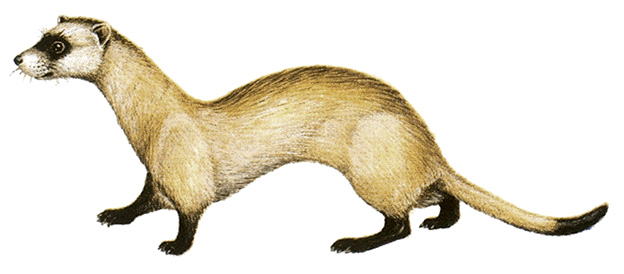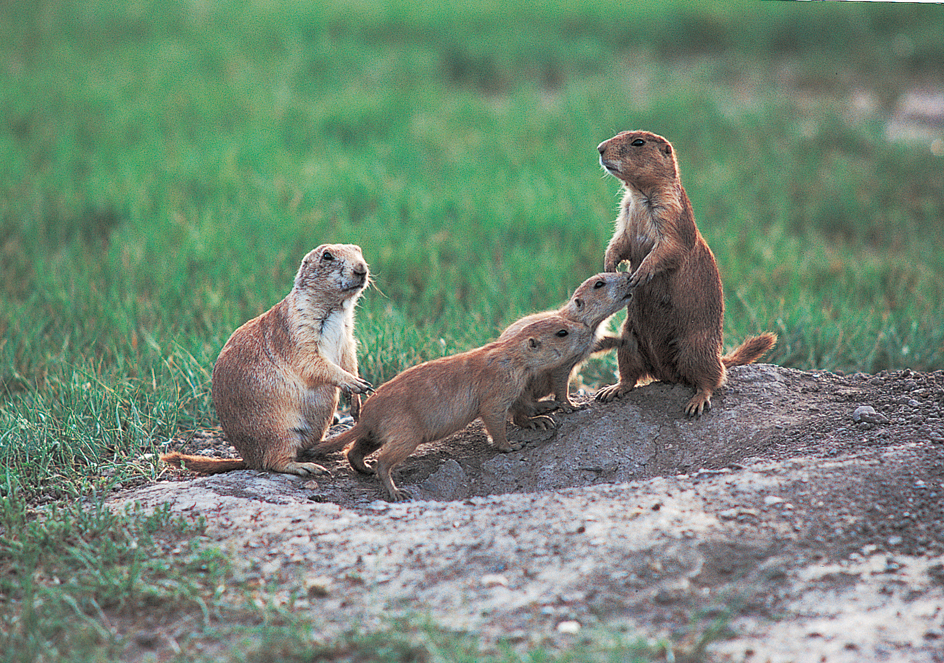Black-footed ferret is a weasel with black feet, a black tail tip, and black fur around the eyes. The rest of the body is yellowish tan. The animal is native to western North America. The black-footed ferret is classified as endangered in the United States.

Black-footed ferrets reach 18 to 24 inches (46 to 61 centimeters) in length. They weigh from about 1.5 to 2.5 pounds (0.7 to 1.1 kilograms). Black-footed ferrets have slender bodies, enabling them to crawl in and out of the homes of prairie dogs . Prairie dogs are burrowing rodents that also live in western North America. Prairie dogs are the primary source of food for black-footed ferrets. Black-footed ferrets also eat such animals as rats, rabbits, and birds. They are nocturnal (active at night). They spend most of their time in burrows. There, they sleep, hunt for food, and hide from predators. They travel above ground to find new burrows or mates.

Black-footed ferrets communicate with one another vocally. To sound an alarm, they produce a loud chatter. To show fear, they hiss. Female black-footed ferrets whimper when they want their young to follow. Male black-footed ferrets make a sound like a laugh or chuckle when they are trying to attract a mate.
Black-footed ferrets breed in March and April. After about 40 days, a litter is born. The average litter size is 3 to 4 ferrets.
In the past, black-footed ferrets lived throughout much of the Great Plains . They depended on prairie dogs for food and lived in underground burrows made by prairie dogs. Since the late 1800’s, however, ranchers have eliminated prairie dogs from much of the Great Plains because they consider the animals to be pests. The black-footed ferret has become rare as a result of the decline in prairie dogs. Disease and the loss of rangeland to agriculture have also reduced the ferret’s numbers.
Scientists once thought black-footed ferrets were extinct. In 1981, however, ranchers in Wyoming discovered a population of more than 125 black-footed ferrets. Over the next several years, many of these animals died of a disease called distemper . To keep them from dying out completely, the U.S. Fish and Wildlife Service and the Wyoming Game and Fish Department captured the remaining animals. Scientists have successfully bred the ferrets in captivity. In 1991, they began releasing captive-bred ferrets into western grasslands that were home to prairie dog populations. The ferrets began reproducing again in the wild.
